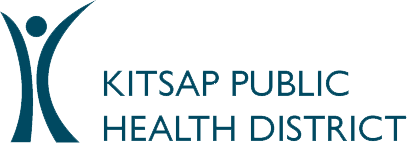
Actions Requested
- Be aware, on Feb. 22, Centers for Disease Control and Prevention (CDC) revised its COVID-19 vaccine clinical considerations. An 8-week interval between first and second doses of mRNA COVID-19 vaccine (Moderna and Pfizer) may be optimal for males 12–39 years old to reduce risk of myocarditis and increase efficacy. CDC still recommends a 3-week (Pfizer) or 4-week (Moderna) interval for people who are immunocompromised, over 65 years old or need rapid protection because of risk of transmission or severe outcomes. Providers decide which interval is best for patients based on benefits and risk factors.
- See CDC Clinician Outreach and Communication Activity (COCA) call slides for more information.
- Be aware, on Feb. 24, Food and Drug Administration (FDA) revised its Evusheld emergency use authorization (EUA) (tixagevimab co-packaged with cilgavimab). When used for COVID-19 pre-exposure prophylaxis, the new initial dose is 300 mg tixagevimab and 300 mg cilgavimab. Recent data shows Evusheld may be less active against some Omicron subvariants. Contact patients who received the previous initial dose (150 mg tixagevimab and 150 mg cilgavimab) and ask them to return for an additional 150 mg tixagevimab and 150 mg cilgavimab.
- See updated Evusheld EUA for more information.
- Be aware, CDC updated its list of underlying medical conditions associated with higher risk of severe outcomes from COVID-19 to include primary immunodeficiency and physical inactivity. The list is not exhaustive. Do not use it to exclude people from recommended preventive measures, like booster doses or needed therapies.
- See National Institutes of Health (NIH) COVID-19 treatment guidelines for more information.
- Strongly recommend patients get COVID-19 vaccine. You are patients’ most trusted source of vaccine information.
- Data tracked by Public Health – Seattle & King County demonstrate that those receiving COVID-19 booster doses are far less likely to become severely ill than people who are not fully vaccinated; also demonstrated in findings from a recent study published by the CDC.
- Educate patients on how to access, use and interpret at-home antigen test kits. Ask patients to not go to local emergency departments for COVID-19 testing to reduce the burden on our hospital system.
- Direct patients to COVID-19 testing sites in Kitsap County and Kitsap community drive-through testing sites. Note that community drive-through site days and locations are being reduced due to low demand.
- Advise patients to order tests from:
- WA state government at www.sayyescovidhometest.org or by calling 800-525-0127. Check back if tests are unavailable. This site is restocked frequently.
- US federal government at www.covidtests.gov or by calling 1-800-232-0233.
- Educate patients on how to care for themselves at home with mild to moderate illness and when to access emergency departments for care.
- Report COVID-19 and other notifiable conditions to Kitsap Public Health 24/7 by calling 360-728-2235 or use the Reportable Disease Fax Form and fax to 360-813-1168 with any corresponding lab results.
COVID-19 Situation Update
As of February 23, Kitsap County has had 38,329 cases of COVID-19 and 316 deaths from COVID-19. Our seven-day case rate dropped to 189.6 per 100,000 showing a consistently decreasing trend over the past week. Rates across sub-county areas range from 76 to 228 per 100,000 residents.
During the week ending February 19, we had 52 new COVID-19 hospitalizations among Kitsap residents. In the past 180 days, unvaccinated people ages 12-59 were six times more likely to be hospitalized for COVID-19 than those fully vaccinated; nearly four times more likely for those age 60 and older.
To date, 31 Kitsap resident COVID-19 related deaths have been reported for January and 12 for February. In the past 180 days, unvaccinated people ages 30-69 were 22 times more likely to die from COVID-19 than those fully vaccinated; four times more likely for those age 70 and older.
The chart below shows our most recent case rate, vaccination rate and COVID-19 cases trend over time:

COVID-19 vaccine
As of February 23, 76.8% of Kitsap County residents have initiated vaccination. Nearly 89,000 (32.7%) Kitsap residents have received an additional or booster vaccine dose. As of February 19, only 35% of children aged 5-11 have initiated vaccination. All Kitsap subcounty areas have at least 70% vaccination initiation rates among those age 12 and older. Differences in vaccination initiation rates persist across race/ethnicity groups, the gap between highest and lowest rate is 42%.
In people 18–39 years old, myocarditis occurs in an estimated 23–33 per million people following a second dose of mRNA COVID-19 vaccine. Nearly all cases are transient and can be treated on an outpatient basis. Recent research shows increasing the interval between first and second doses of mRNA COVID-19 vaccine from 3–4 weeks to 8 weeks can reduce the risk of myocarditis by over half while also substantially improving efficacy.
CDC guidance allows clinicians to decide when the benefits of the extended interval exceed the increased risk of COVID‑19 infection. Regardless of the interval between first and second doses, a booster dose should be delivered no sooner than 5 months after the second dose. These changes do not affect people with compromised immune systems or people over 65 years old, as the risk of COVID-19 infection outweighs the benefit of reduced myocarditis incidence.
Resources
- COVID-19 vaccine clinical considerations, CDC.
- COCA call slides, CDC.
- Epidemiology of myocarditis and pericarditis following mRNA vaccines in Ontario, Canada, Buchan, et. al.
- Booster dose updates, FDA.
- Emergency use authorization (EUA) fact sheets for recipients and caregivers:
- COVID-19 vaccine locator, DOH.
- COVID-19 vaccine for providers, Kitsap Public Health District.
- COVID-19 vaccine provider toolkit and resources, DOH.
- COVID-19 vaccination for providers, CDC.
- Clinical considerations for COVID-19 vaccination and guidance for managing anaphylaxis, CDC.
- COVID-19 vaccine quick reference guide for healthcare professionals, CDC.
- COVID-19 vaccine training module on best practices for providers, CDC.
- COVID-19 Case, Hospitalizations and Deaths by Vaccination Status, DOH.
COVID-19 testing
- K–12 test requirements to return to school.
- Antigen test guidance, CDC.
- For help with questions or accessing resources, contact Kitsap Public Health at (360) 728-2235.
COVID-19 prevention patient education
Share with patients:
- What to do if you test positive for COVID-19.
- What to do if you were exposed to someone with COVID-19.
Contacting the Health District
- Call (360) 728-2235 and leave a message. Includes reporting notifiable conditions 24 hours a day, 7 days a week. Leave the patient’s name, date of birth and disease.
- Fax (360) 813-1379.
Additional Resources
